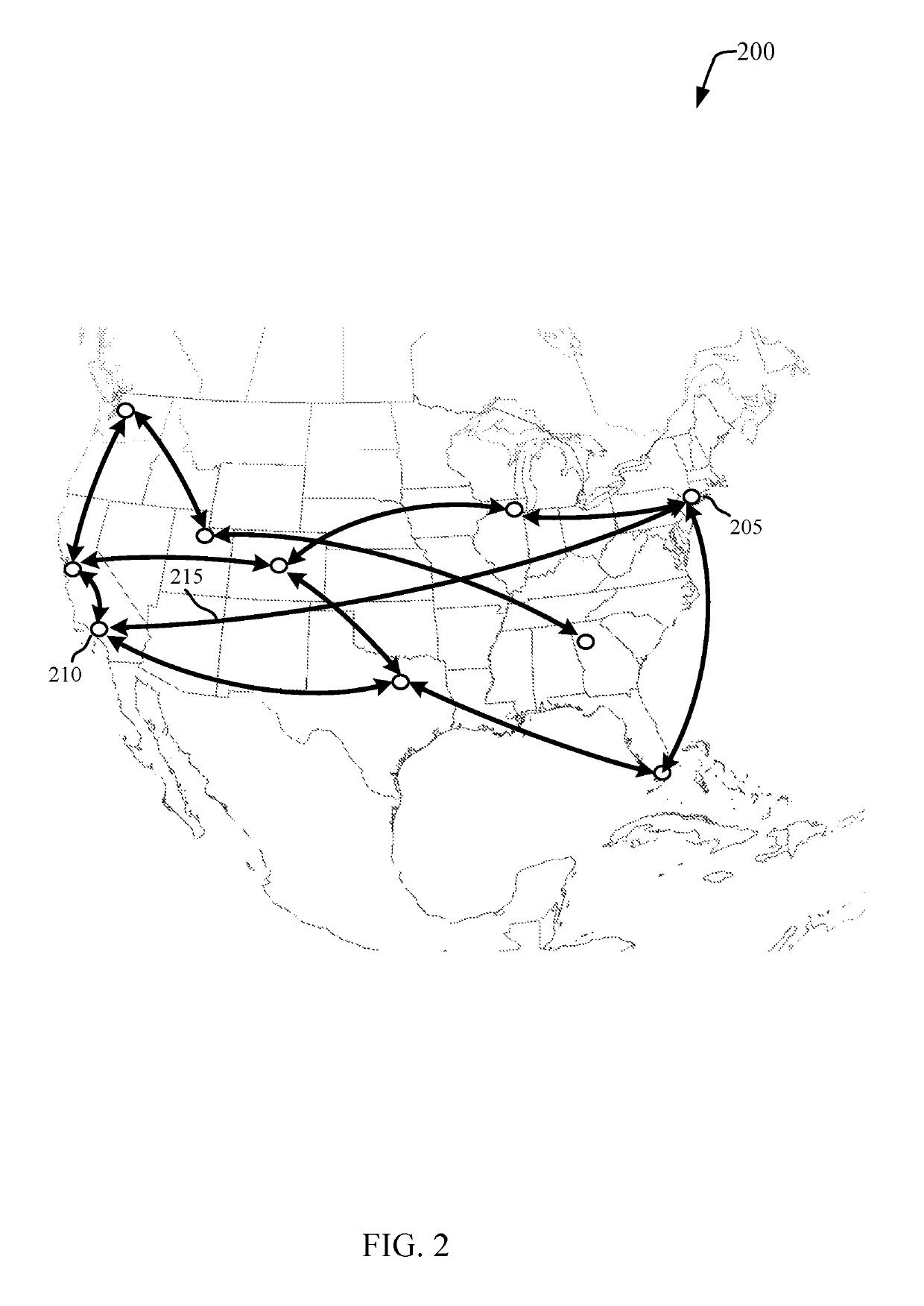Dynamic spatial allocation of satellite capacity based on mobile vessel load forecasting
a satellite and load forecasting technology, applied in the field of wireless communication, can solve the problems of significant network resource demands within a particular geographic area, and achieve the effects of maximizing capacity utilization, high speed, and significant network resource demands for mobile vessels
- Summary
- Abstract
- Description
- Claims
- Application Information
AI Technical Summary
Benefits of technology
Problems solved by technology
Method used
Image
Examples
Embodiment Construction
[0015]Increasingly, passengers on mobile vessels desire broadband network access while in transit. Mobile vessels may receive network access service via a communication link such as a satellite communications link. The mobile vessels may have an on-board multi-user access terminal that communicates with ground stations (e.g., via a satellite) of a communications system and provides network access connectivity for the passengers. For example, users may connect their communication devices (e.g., smartphones, laptops, tablets, etc.) to a wireless local area network (WLAN) served by the multi-user access terminal, which routes data communications to other networks (e.g., the Internet) via the communication link. Thus, a capacity of the communications link may be shared by the users via the multi-user access terminal.
[0016]The satellite communications system may be a multi-beam satellite system and the communication link may use resources of one of the satellite user beams at a given tim...
PUM
 Login to View More
Login to View More Abstract
Description
Claims
Application Information
 Login to View More
Login to View More - R&D
- Intellectual Property
- Life Sciences
- Materials
- Tech Scout
- Unparalleled Data Quality
- Higher Quality Content
- 60% Fewer Hallucinations
Browse by: Latest US Patents, China's latest patents, Technical Efficacy Thesaurus, Application Domain, Technology Topic, Popular Technical Reports.
© 2025 PatSnap. All rights reserved.Legal|Privacy policy|Modern Slavery Act Transparency Statement|Sitemap|About US| Contact US: help@patsnap.com



